Zelf boter maken.
Last week we had a half gallon of cream that needed to be used up and Matt had been talking about making butter using the mason jar method.
You remember right? It’s the method your 1st grade teacher used as she sat you all in a circle instructing you to take turns shaking the jar? Yeah, that one.
Since I didn’t have the energy of 26 1st graders to make this happen, I needed the brute strength of one good husband to finish off the project. Thanks Matt!
On a quiet afternoon I poured some of the cream into a glass jar and joined Matt on the porch for some relaxation. I began shaking my jar full of cream as I rocked on the porch. The twist to this story – I didn’t get to relax much, and we ended up with not-quite-yet-butter. (Trying a project first and then researching the correct method is usually my M.O.) But you never know until you try. Right?!
The mason jar method is only one (hard) way to make butter – I like to call it the Bicep Builder Method. There are simpler ways butter can be made at home using a food processor, stand mixer, or blender. I think we’ll try it in our food processor or Vitamix next time and save the bicep workout for the weight room. (Read about how easy making butter in a blender is here.)
Make butter in a jar: The Bicep Builder Method
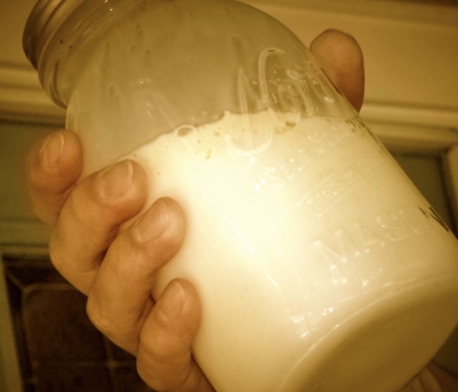
1. Add cream to a jar.
Use a jar with a tight fitting lid. We used a quart mason jar and filled it only about half way so the contents could move when shaken. Hint: higher quality cream yields higher quality butter.
2. Shake vigorously.
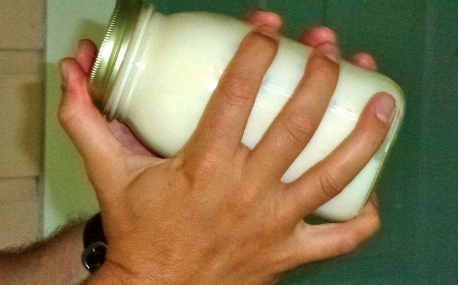
You’ll want at least one more person to help out with this stage.
No matter which method you use, cream will go through a few stages. First, it will turn into whipped cream, then into a grainy-looking curd-like substance with liquid. Don’t stop there.
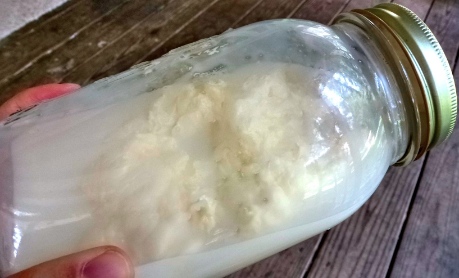
This is where we stopped, all excited, then ended up with the white curdled stuff that’s somewhere in between whipped cream and butter.
You’ll want to continue shaking until you have a solid lump of butter that separates from the liquid in the jar. This may take about 30 minutes of vigorous shaking. If using an appliance to make it, the butter will take on a lightly golden color when finished.
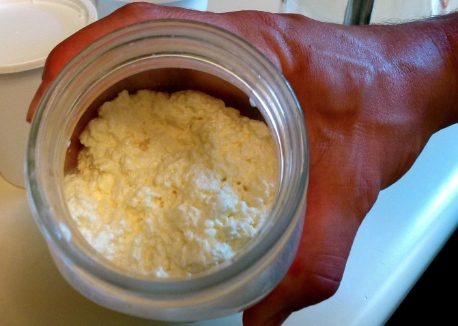
Notice the curdled-looking cream. We prematurely stopped shaking here.
3. Strain off liquid.
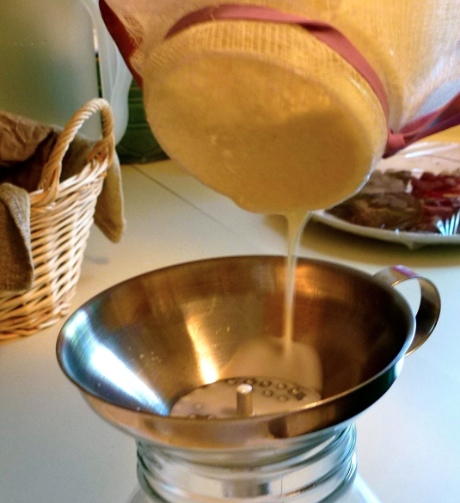
The liquid is pure buttermilk! It can be strained into another jar and saved for pancakes, drinking, or other baking projects. Strain off as much liquid as possible. We used a fork to release the remaining liquid from the butter. It took us several minutes of “kneading” with a fork and straining repeatedly. You can also scoop out the butter, wrap it in cheesecloth or a clean tea towel, and squeeze to release the liquid.
4. Rinse butter.
This is a step we found out about after we made our first batch. I read that rinsing under tepid water is best. Water that is too warm will turn your butter to a mushy mess, and water that’s too cold will cause the butter to harden and make it difficult to work with.
For this step you can leave it in the jar, the cheesecloth/tea towel, or scoop it out onto a plate where the butter can be smooshed around with a spatula. Rinse until liquid runs clear from the butter, and squeeze/strain all liquid off.
Pack butter into a container for storage.
5. Add salt to taste.
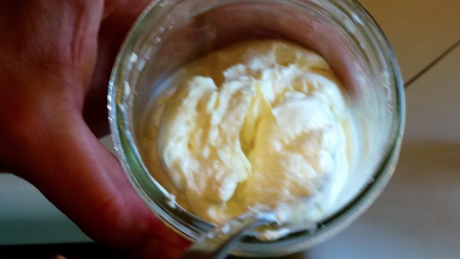
If you like salted butter, this is the time to add just a bit of salt. Try adding about ¼-½ teaspoon at a time, working it in, and tasting. The addition of salt will also help preserve the butter. (Find unrefined sea salt here.)
6. Refrigerate.
We have read that it will only last a few weeks in the refrigerator, so try freezing if you have too much.
For freezing, a piece of waxed paper can be pressed on the top surface of the butter if storing in a container. You could also mold your butter into rectangles, balls, etc., and wrap in waxed paper for the freezer.
If you have a butter bell you can add a little water to the bottom of the crock and keep fresh butter unrefrigerated for several days.
Lessons we learned…
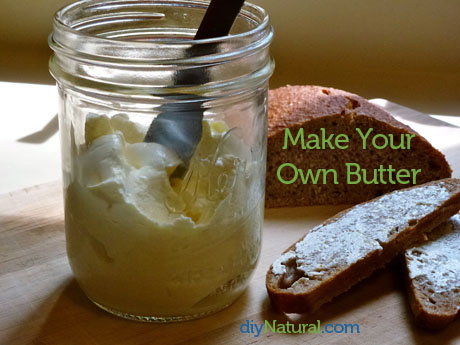
Even though our impatience yielded not-quite-yet-butter, it still tastes delicious and looks beautiful. I enjoyed it on some zucchini bread this morning and we’ve spread it on toast and warm veggies.
Next time we’ll use one of our wonderful kitchen appliances to speed the process and save me from developing a Popeye forearm. Processing the butter longer and rinsing it will also be part of our next experience.
Geen opmerkingen:
Een reactie posten